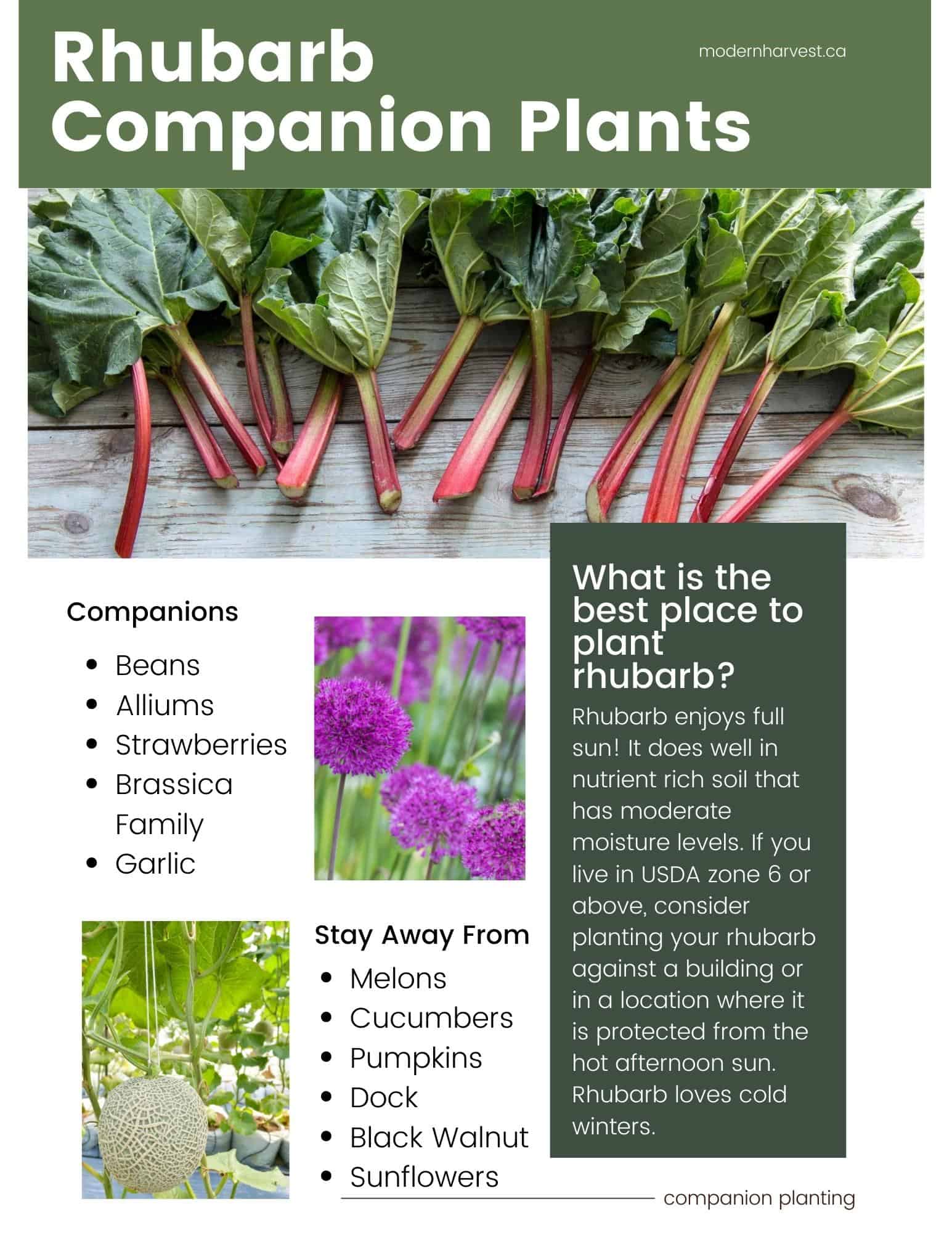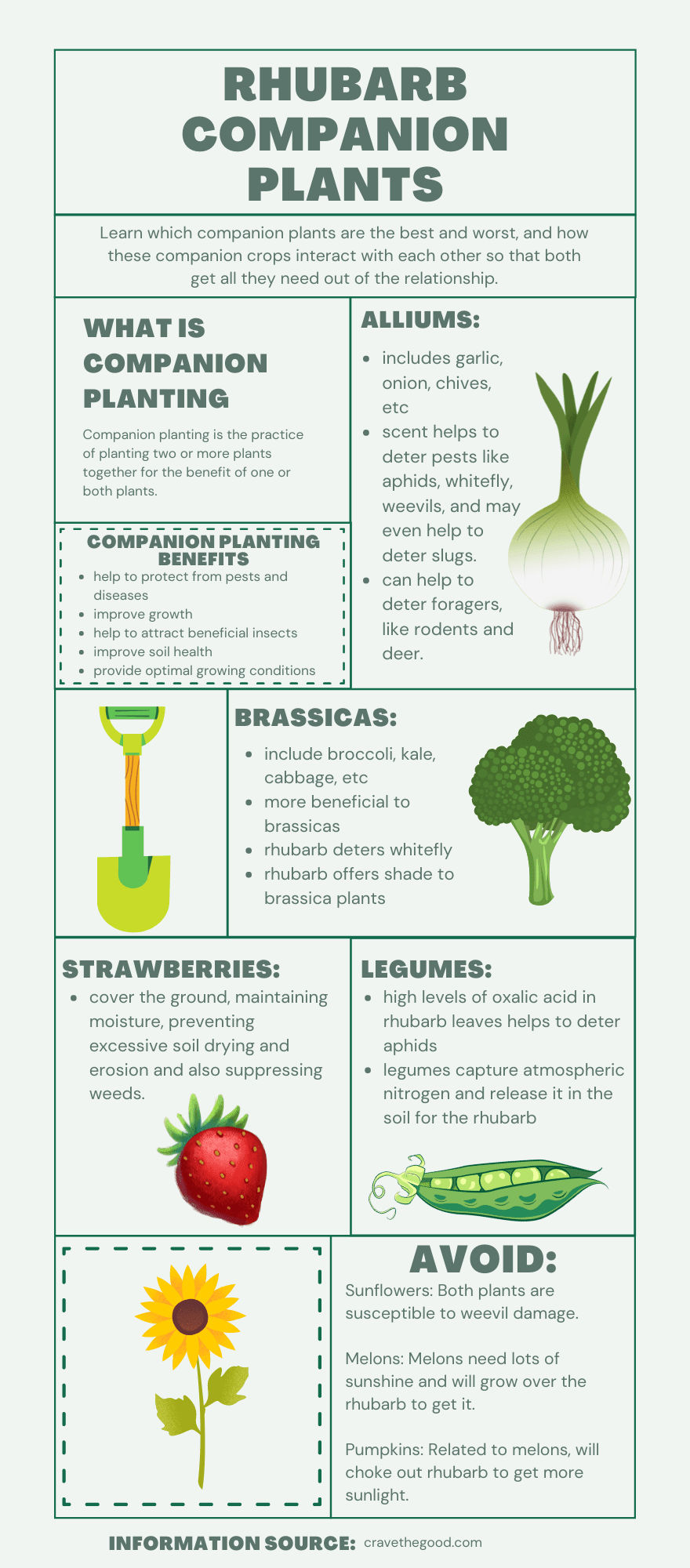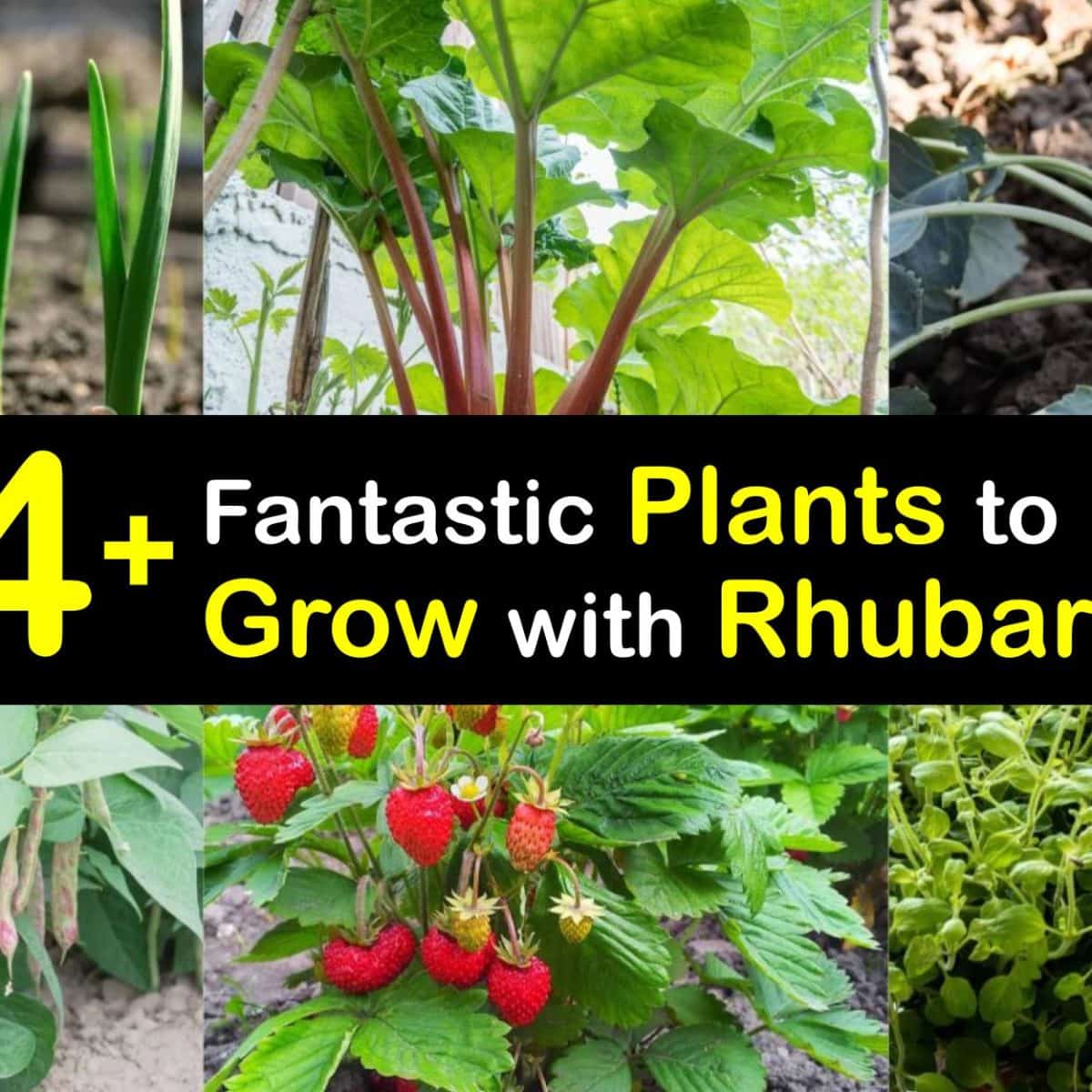The Ultimate Guide To Rhubarb Companion Planting
The Ultimate Guide to Rhubarb Companion Planting
Rhubarb is a delicious and versatile vegetable that can be enjoyed in a variety of dishes. It's also a relatively easy plant to grow, but there are a few things you can do to improve its yield and health. One of the best ways to do this is by companion planting.
Companion planting is the practice of planting certain plants together in order to benefit each other. Some plants help to repel pests, while others improve the soil quality or provide shade. By planting rhubarb with the right companion plants, you can help to ensure that it thrives.
In this guide, we'll discuss the best companion plants for rhubarb, as well as some plants that you should avoid planting near it. We'll also provide some tips on how to plant and care for rhubarb, so that you can enjoy a bountiful harvest for years to come.
Best Companion Plants for Rhubarb
There are a number of plants that make good companion plants for rhubarb. Some of the best include:
- Alliums: Alliums, such as garlic, onions, and chives, help to repel pests that can damage rhubarb, such as aphids, whiteflies, and weevils. They also help to improve the soil quality, which can benefit rhubarb's growth.
- Brassicas: Brassicas, such as broccoli, cabbage, and kale, also help to repel pests from rhubarb. They also provide shade for rhubarb in the summer, which can help to prevent it from getting too hot.
- Legumes: Legumes, such as beans and peas, help to improve the soil quality by fixing nitrogen. This can benefit rhubarb's growth, as nitrogen is an important nutrient for plants.
- Strawberries: Strawberries and rhubarb are a classic combination, and for good reason. They both grow well in the same conditions, and they can help to improve each other's growth. Strawberries help to suppress weeds around rhubarb, while rhubarb helps to protect strawberries from pests.
- Melons: Melons and rhubarb can also be planted together. Melons help to keep the soil cool, which can benefit rhubarb in hot weather. Rhubarb helps to repel pests from melons.
Plants to Avoid Planting Near Rhubarb
There are a few plants that you should avoid planting near rhubarb. These include:
- Tomatoes: Tomatoes and rhubarb are both susceptible to the same pests, so planting them together can increase the risk of infestation.
- Potatoes: Potatoes and rhubarb can compete for nutrients, so it's best to avoid planting them together.
- Sunflowers: Sunflowers and rhubarb are both susceptible to the curculio weevil, so planting them together can increase the risk of infestation.
Planting and Care Tips for Rhubarb
Rhubarb is a relatively easy plant to grow, but there are a few things you can do to ensure that it thrives. Here are some planting and care tips:
- Plant rhubarb in full sun.
- Plant rhubarb in well-drained soil.
- Amend the soil with compost or manure before planting.
- Space rhubarb plants 3-4 feet apart.
- Water rhubarb regularly, especially during the first year.
- Fertilize rhubarb in the spring with a balanced fertilizer.
- Harvest rhubarb stalks in the spring and early summer.
Conclusion
By following these tips, you can help to ensure that your rhubarb plants thrive. With a little care, you'll be enjoying delicious rhubarb dishes for years to come.
Rhubarb is a delicious and versatile vegetable that can be enjoyed in a variety of dishes. But did you know that companion planting can help to improve the growth and productivity of your rhubarb plants?
Companion planting is the practice of planting certain plants together to benefit each other. Some plants, for example, can help to repel pests or attract beneficial insects. Others can help to improve the soil or provide shade.
There are a number of different companion plants that can be beneficial for rhubarb. Some of the best include:
- Alliums: Alliums, such as garlic, onions, and chives, can help to repel pests and improve the soil.
- Brassicas: Brassicas, such as broccoli, cabbage, and kale, can help to attract beneficial insects and improve the soil.
- Legumes: Legumes, such as beans and peas, can help to fix nitrogen in the soil, which is beneficial for rhubarb.
- Strawberries: Strawberries can help to shade rhubarb plants and prevent them from getting sunburned.
If you're interested in learning more about rhubarb companion planting, I recommend visiting Gardenia Inspiration. This website has a comprehensive chart that lists all of the best companion plants for rhubarb.
Image of rhubarb companion planting chart
5 different images of "rhubarb companion planting chart" from Pinterest:
Rhubarb Companion Planting Chart
 This chart shows which plants are good companions for rhubarb, and which plants should be avoided.
This chart shows which plants are good companions for rhubarb, and which plants should be avoided.Rhubarb Companion Planting
 This infographic shows the benefits of companion planting rhubarb with other plants, such as improving soil quality and deterring pests.
This infographic shows the benefits of companion planting rhubarb with other plants, such as improving soil quality and deterring pests.Rhubarb Companion Planting Ideas
 This list of companion plants for rhubarb includes flowers, vegetables, and herbs.
This list of companion plants for rhubarb includes flowers, vegetables, and herbs.Rhubarb Companion Planting Guide
 This guide provides more detailed information on companion planting rhubarb, including how to choose the right plants and how to plant them together.
This guide provides more detailed information on companion planting rhubarb, including how to choose the right plants and how to plant them together.Rhubarb Companion Planting Tips
 This list of tips provides additional information on companion planting rhubarb, such as how to space the plants and how to water them.
This list of tips provides additional information on companion planting rhubarb, such as how to space the plants and how to water them.
Post a Comment for "The Ultimate Guide To Rhubarb Companion Planting"